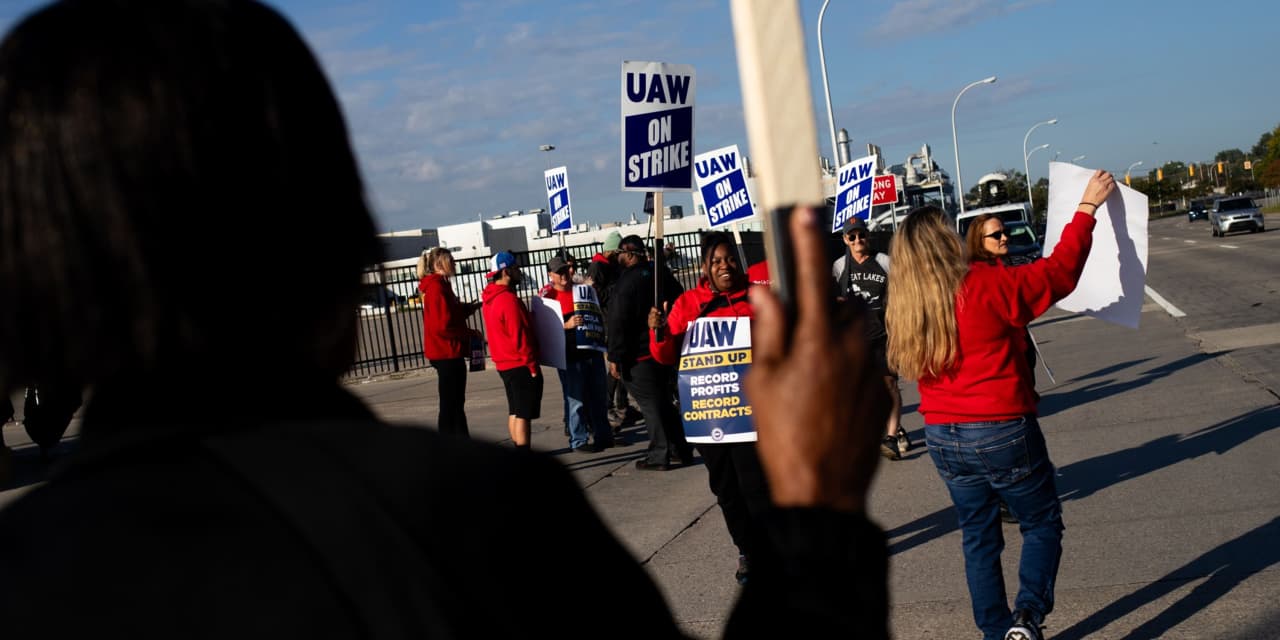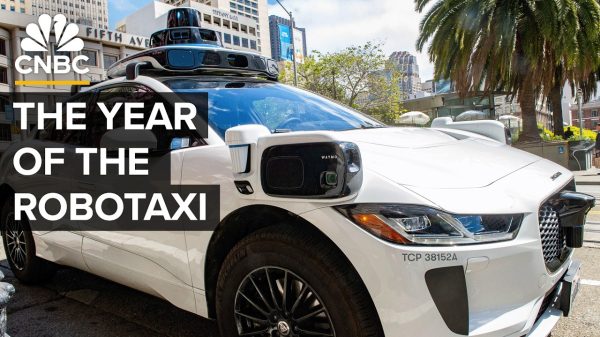United Auto Workers President Shawn Fain said Friday that the union’s strike would expand to all General Motors and Stellantis parts distribution facilities if a deal wasn’t reached by 12 p.m. ET.
The walkouts across dozens of facilities spanning about 20 states would be in addition to the three Ford, GM, and Stellantis plants in Missouri, Ohio, Michigan already being striked.
The UAW strike has led to layoffs at both Ford and GM. Further escalation is likely to cause more disruptions and losses at the car companies as the union attempts to force the companies into meeting it demands for higher wages and better working conditions.
Shares of the big three auto makers were higher in mid-morning trading.
This is breaking news. Please check back for updates.
The UAW is threatening to expand its strike on Friday against Big Three automakers
General Motors,
Ford Motor,
and Chrysler parent
Stellantis,
and many observers are assuming it’s a done deal. If the union idles high-profit assembly plants or high-volume powertrain plants, it means the labor confrontation is entering a tough, new stage.
The UAW went out on a limited strike, at one facility per auto maker, on Sept. 15. Union leadership says more workers will walk out Friday if substantial negotiating progress isn’t made. “Expansion at this point seems almost a certainty,” says Wedbush analyst Dan Ives.
A 10 a.m. presentation by the UAW can be watched here.
Benchmark analyst Mike Ward expects strike expansion too, but says investors should watch which factories are idled. He says one more plant per auto maker is likely. If the strike expands to larger plants with more workers and key products, it’s a sign that the union is unhappy and looking to inflict more financial pain on the auto makers.
Facilities such as GM’s Fort Wayne, Ind., plant that makes Chevrolet Silverados is a key one to watch. So is Stellantis’ Sterling Heights assembly plant in Michigan which builds Dodge Rams trucks. Ford has highly profitable truck plants in Dearborn, Mich., and Kansas City, Mo.
Idling one of these plants would be a gut blow to the auto makers. However, if the union really wants to hurt a car maker, it could strike a powertrain plant that supplies multiple assembly plants and shut them all down.
The UAW didn’t respond to a request for comment about its strike expansion plans.
Analysts Ives and Ward believe expansion is inevitable partly because the two sides appear far apart and are talking tough. UAW President Shawn Fain has literally trashed proposals from the auto makers. GM President Mark Ruess wrote an op-ed in the Detroit Free Press Wednesday saying that the “flow of misinformation is not fair to anyone.”
What’s more, The Detroit News published messages between Union executives Thursday that said in part its strategy was to inflict “operational chaos” on the automakers. Tough talk indeed. Still, negotiations aren’t supposed to be easy, and winning concessions doesn’t happen because one side asks nicely. The UAW didn’t immediately respond to a request for comment about the messages.
As far as the actual bid and ask between the two sides, the UAW is asking for wage increases in the range of 40% over the life of the contract, along with a shorter workweek, without a pay reduction, as well as enhancements to work rules and retirement benefits.
The auto companies are currently offering roughly 20% pay increases plus additional adjustments for cost of living increases. There have also been some concessions on work rules and retirement funding.
The difference between 20% and 40% seems large, but with cost of living adjustments, the difference might be 2% a year on average. That looks less daunting and some of that can be bridged with enhanced profit-sharing, suggests Ward.
Whether profit-sharing will cut the Gordian knot and whether the two sides are getting closer isn’t the only thing at stake. The strike is a way for the union “to get everyone on the same page after a very dark time at Solidarity House,” says DataTrek co-founder and former auto analyst Nicholas Colas.
The UAW, whose Detroit headquarters are called Solidarity House, is communicating with its members, not just the auto companies. The credit crisis, GM bankruptcy, and foreign competition have been hard on the industry. Wages, excluding profit-sharing, between 2009 and 2019 rose at about 1% a year on average, according to the Federal Reserve, while U.S. market share of the Big Three went from roughly 45% to 40%.
The companies were “chasing a ball down the hill,” says Ward. Lower share meant plant closures that angered the union. Now Ford and GM are planning to take back share with electric vehicles, especially in the truck and commercial fleet markets.
Higher labor costs could impact their ability to win EV share, but headline wage gains don’t necessarily equal cost increases. Car companies have offered early retirement, helping bring workers in at the lower end of the wage scale.
Current negotiations are like a complicated game of Risk with feints, distractions, and subterfuge. Investors shouldn’t get too despondent, or too laissez-faire, about the process. “There is always an end, but in this case maybe not for a while,” says Colas.
Coming into Friday trading, Ford and GM shares are down about 19% and 15%, respectively, since the start of July, when labor issues started to weigh on investor sentiment. The
S&P 500
is down about 2% over the same span. Stellantis stock is up about 10%, but Stellantis is still a cheaper stock. Stellantis shares trade for less than 4 times estimated 2024 earnings. Ford and GM shares trade for less than 7 times and 5 times. respectively.
Ford, GM, and Stellantis shares are rising in early trading after CNBC reported the sides were making progress. Ford shares are up 3.2%. GM stock is up 1.1%. Stellantis shares have added 0.9% in early trading Friday ahead of the Union’s strike decision. The S&P 500 and
Dow Jones Industrial Average
are up about 0.3% and 0.1%, respectively.
Write to Al Root at [email protected]
Read the full article here











